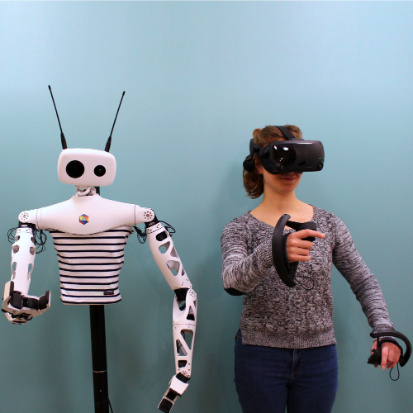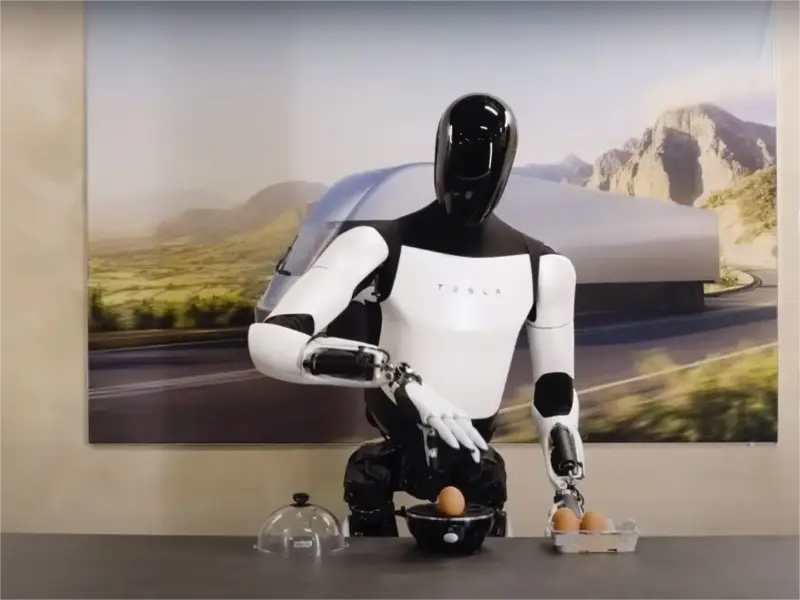- A humanoid robot is a robot designed to resemble and mimic human form and behaviour. The primary goal of humanoid robots is to interact with human tools and environments, making them versatile for various applications, from industrial tasks to personal assistance.
- The humanoid robot industry is a rapidly growing sector within the broader robotics and AI field. A wide range of startups focused on designing, developing, and deploying robots that resemble and mimic human form and behaviour, including Figure AI, United Robotics Group and Sanctuary AI.
A humanoid robot is a robot designed to resemble and mimic human form and behaviour. The humanoid robot industry is a rapidly growing sector within the broader robotics and AI field. A wide range of startups focuses on designing, developing, and deploying robots that resemble and mimic human form and behaviour, such as Figure AI, United Robotics Group and Sanctuary AI, Pollen Robotics and Toyota Research Institute.
Robots in our everyday lives
A robot is a machine that is programmed by a computer to automatically perform a series of complex actions. The robot can be autonomous or semi-autonomous and can be guided by an external control device, or controls can be embedded in it.
Robotics is the branch of technology concerned with the design, construction, operation, and application of robots and computer systems for control, sensory feedback, and information processing.
These technologies involve automated machines that can replace humans in hazardous environments or manufacturing processes, or look, act, or cognitively resemble humans. Many of today’s robots are inspired by nature and contribute to the field of bionic robotics. These robots have also created a new branch of robotics: soft robots.
Also read: Are robots better pilots than people?
Most robots are task-performing machines whose design focuses on pure function rather than expressive aesthetics. The construction of robots may be reminiscent of the human form, but certain types of robots are designed to resemble and mimic human form and behaviour.
These robots are called humanoid robots, which typically have a torso, a head, two arms, and two legs, although some designs may only have a portion of these components. The primary goal of humanoid robots is to interact with human tools and environments, making them versatile for various applications, from industrial tasks to personal assistance.
Startups of humanoid robots
The humanoid robot industry is a rapidly growing sector within the broader robotics and AI field. A wide range of startups focused on designing, developing, and deploying robots that resemble and mimic human form and behaviour.
This industry encompasses a wide range of applications, from service and entertainment to healthcare and industrial tasks. Goldman Sachs analysts expect the market for humanoid robots to reach $38 billion by 2035 and expect shipments to exceed 250,000 units in 2030.
Also read: Tesla’s humanoid robot, Optimus, may debut in 2025
1. Figure
A new humanoid robotics founded in 2022 has recently entered the scene. It is a startup focused on building humanoid robots that can perform dangerous and bad jobs. Figure AI has developed a general-purpose robot, called Figure 01, that looks and moves like a human.
The company expects its robots to be used in manufacturing, transportation and logistics, warehousing and retail, “where labour shortages are most severe,” although its machines are not intended for military or defence applications.
The ultimate goal of Figure is for Figure 01 to perform “everyday tasks” autonomously. The company said that to achieve this goal, it will need to develop more powerful artificial intelligence systems.
Figure also recently announced a partnership with OpenAI to integrate its artificial intelligence (AI) system into the body of a humanoid robot, and secured $675 million (€623.5 million) in venture capital funding. The funding comes from a group that includes Amazon founder Jeff Bezos, Microsoft, chipmaker Nvidia, and the startup financing arms of Amazon and Intel.
2. United Robotics Group
United Robotics Group (URG), founded by Thomas Hähn in 2020, is the CobiotX company that created this third generation of robotics. The company focuses on developing humanoid robots for therapeutic and educational purposes. Their robots are designed to assist in rehabilitation and learning processes.
The humanoid robots NAO and Pepper have both been successfully used as multi-functional platforms in the field of education. They are used as teachers’ aides and also for students with disabilities such as autism or behavioural problems.
URG’s integration of NAO robots into Jupyter Notebooks provides valuable opportunities for teachers to enhance coding, data science and machine learning lessons and create interactive hands-on learning experiences for students.
Pepper’s integration with ChatGPT4 opens up new dimensions of interactivity and expressiveness. The synergy between advanced speech processing and physical expression makes the interaction not only informative but also entertaining.
3. Sanctuary AI
Founded in 2018, Sanctuary AI is a developer of humanoid general-purpose robots powered by AI. Sanctuary AI’s mission is to create the world’s first human-like intelligent general-purpose robot to help us work more safely, efficiently and sustainably.
Phoenix is the world’s first humanoid general-purpose robot powered by the company’s control system Carbon. The system mimics subsystems in the human brain, such as memory, sight, sound, and touch, and translates natural language into actions in the real world.
4. Pollen Robotics
Pollen Robotics, founded in 2016, is a French company specialising in the development of robotic platforms and solutions. The company develops Reachy, an open-source interactive humanoid robot designed for research, education, and practical applications. Reachy is characterised by its modular design, customisable features, and teleoperation capabilities. What’s more, Reachy’s arms can be remotely controlled for picking and placing operations via VR.

5. Toyota Research Institute
One of the planet’s most recognisable and admired brands, Toyota maintains many cross-industry subsidiaries, research, and investments on top of its automotive business. Toyota Research Institute (TRI), founded in 2016 by prominent American robotics engineer James J. Kuffner Jr., is the global company’s R&D enterprise focusing on AI and robotics.
Toyota introduced the T-HR3, a bipedal humanoid machine with a sensor-equipped head and fully articulated limbs, which is a remote-controlled robot that can replicate the movements of a connected person from a distance. A subsequent version of the T-HR3 is designed for space travel, using 5G technology for remote control at distances of up to 10 kilometres.

